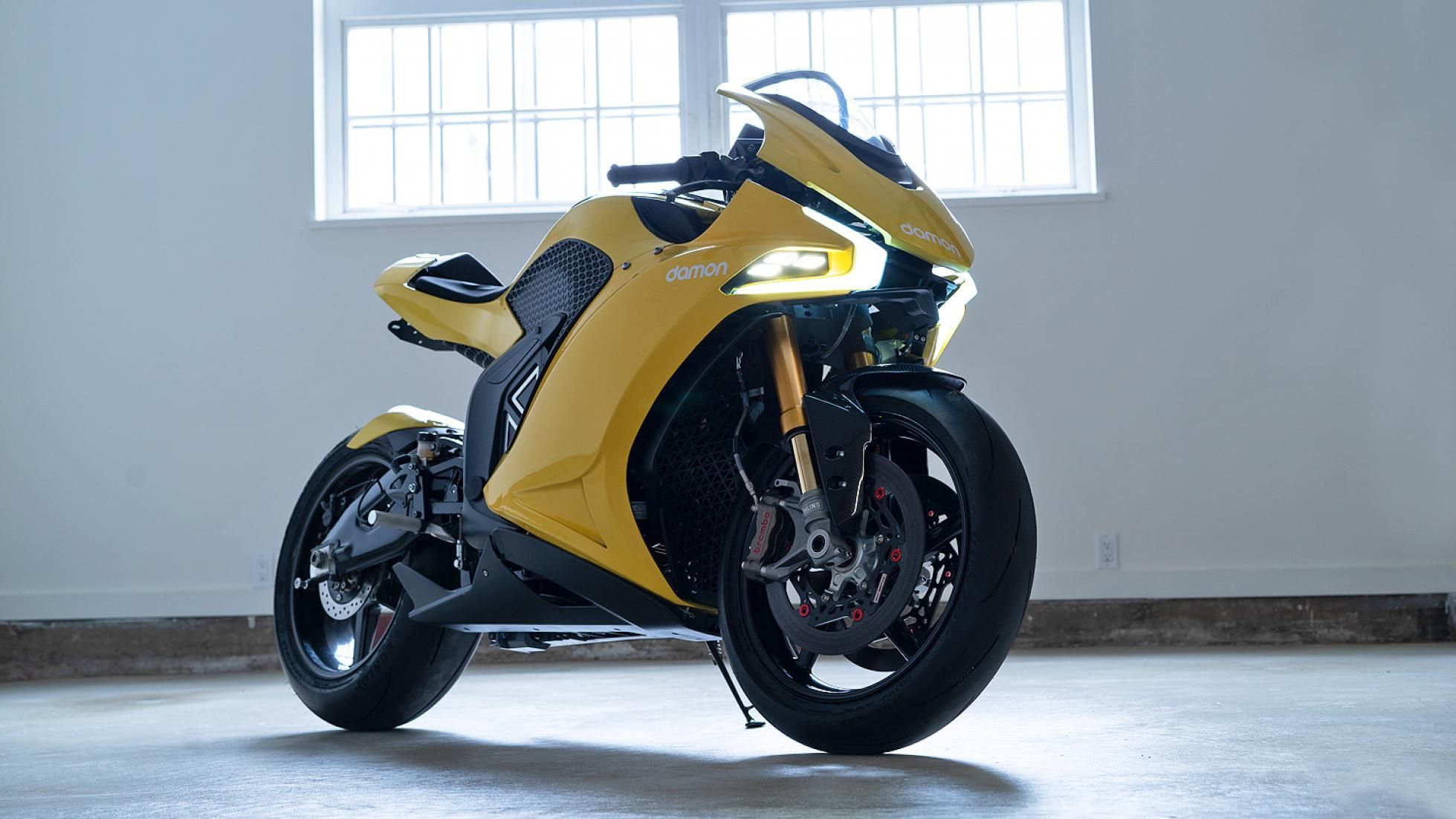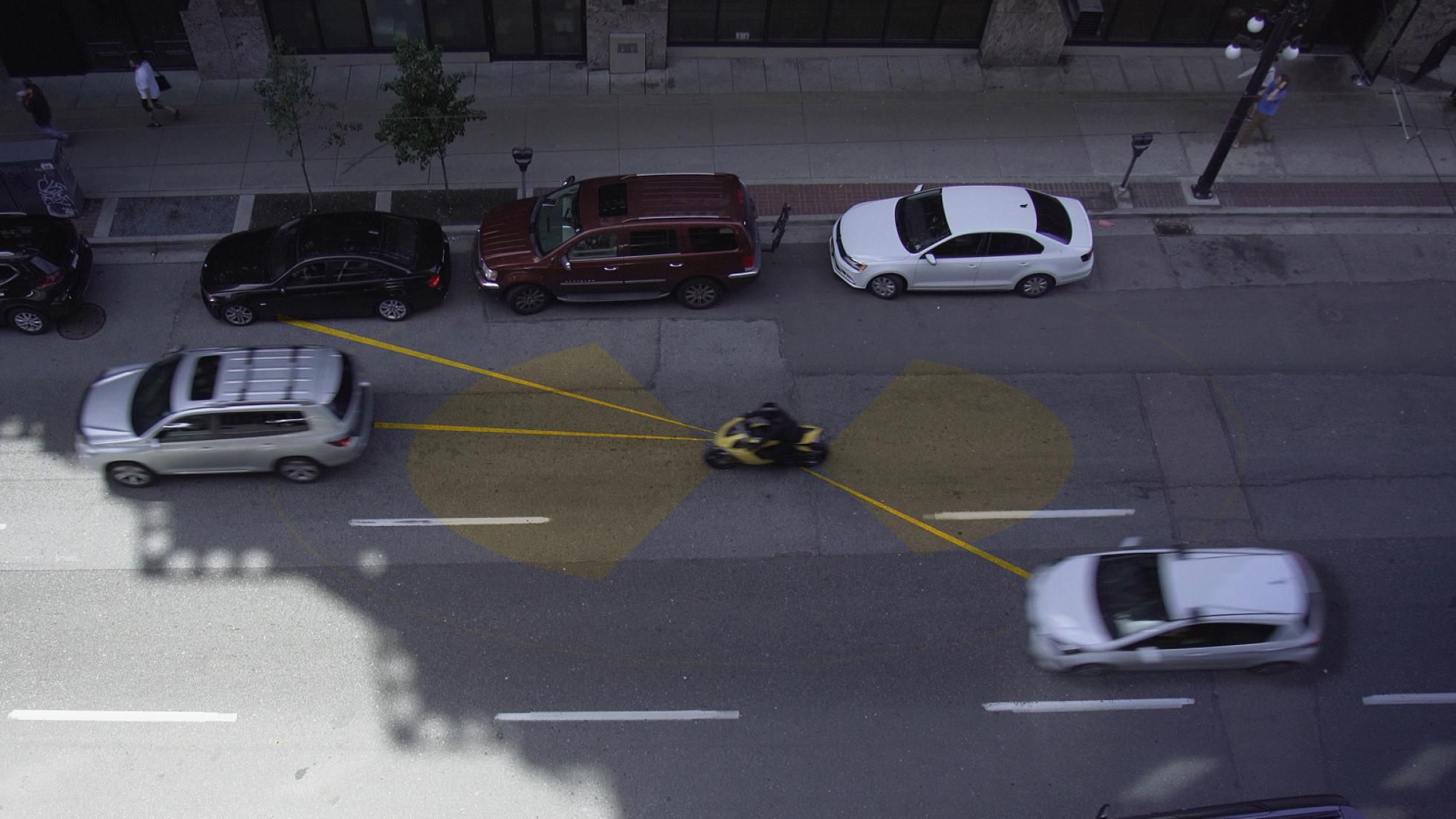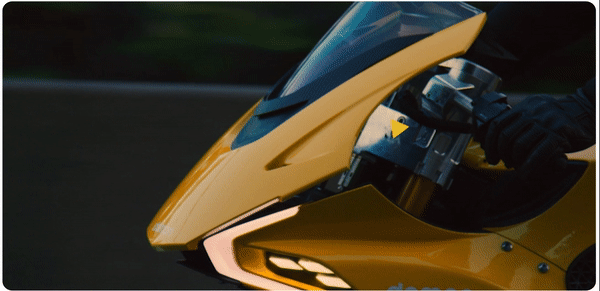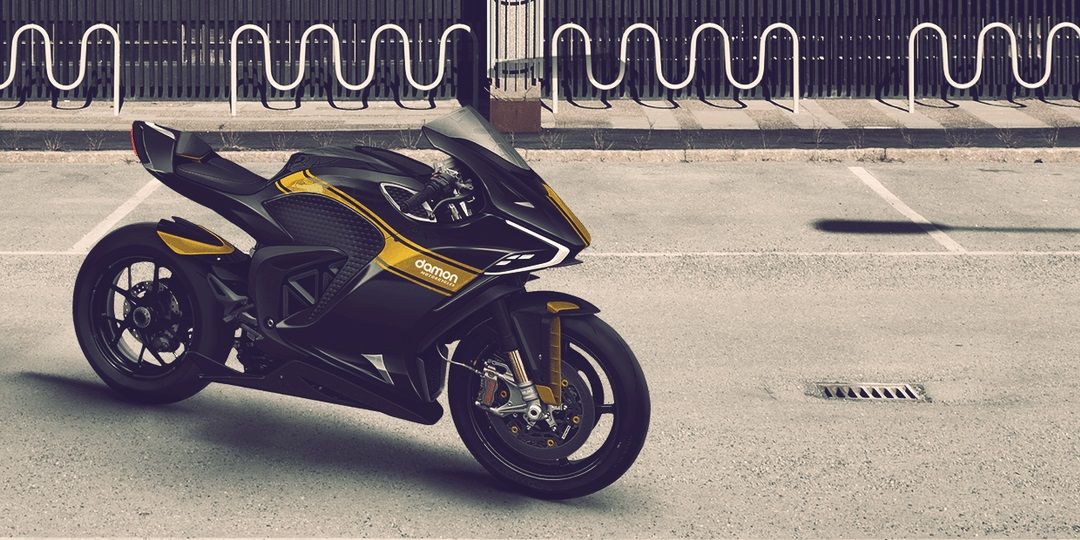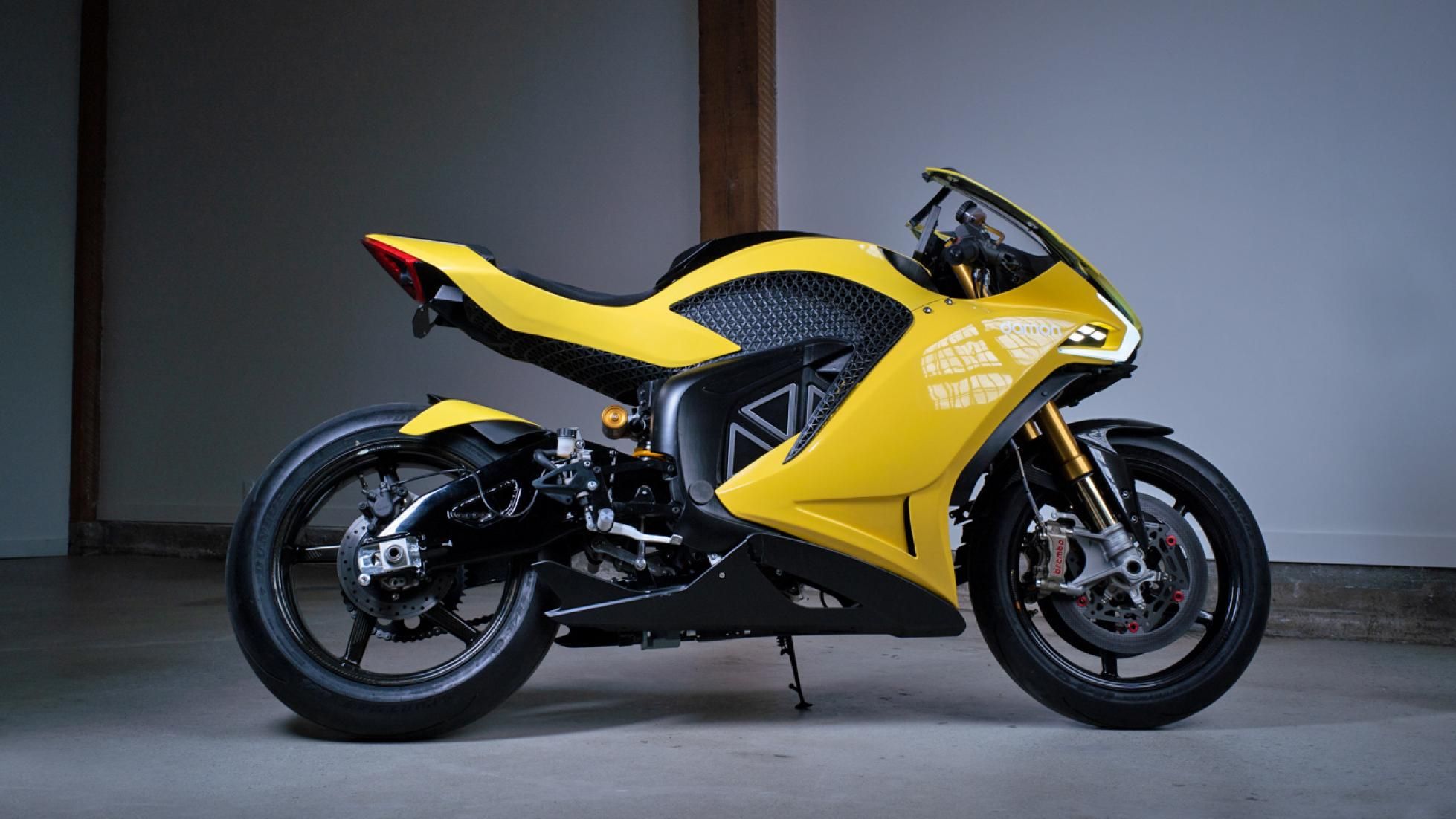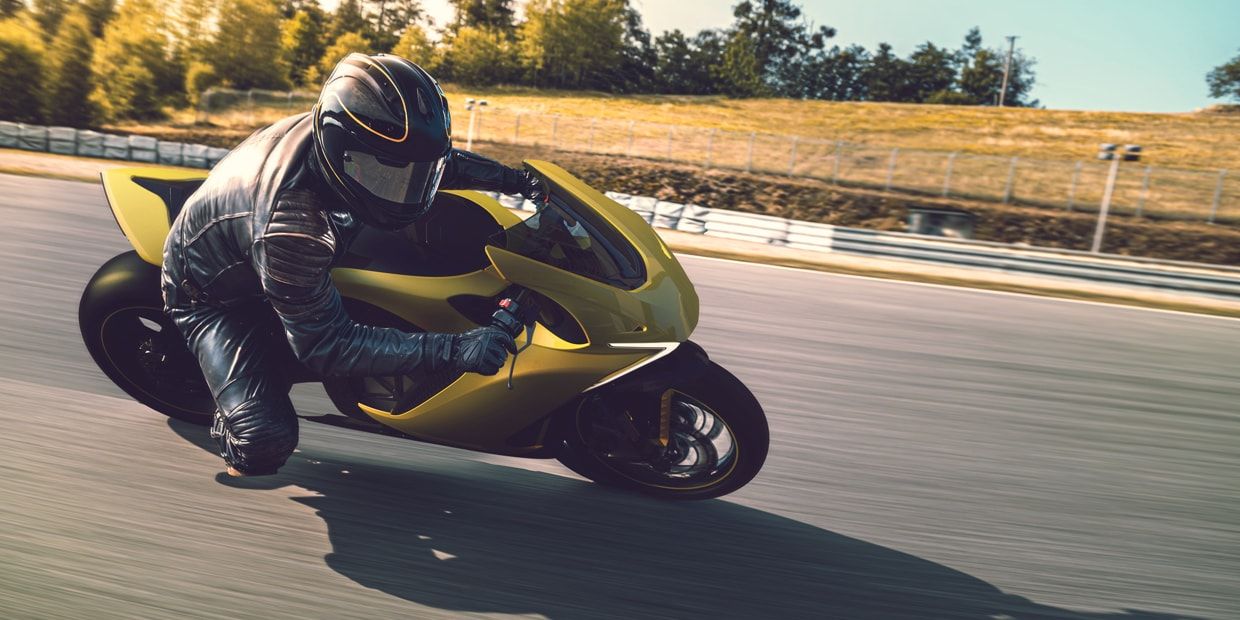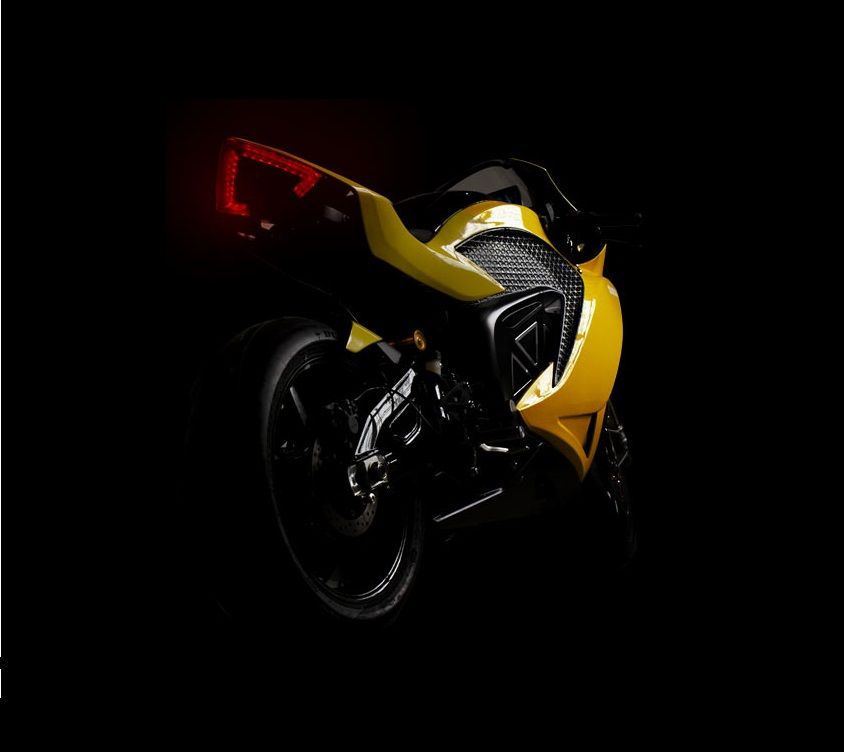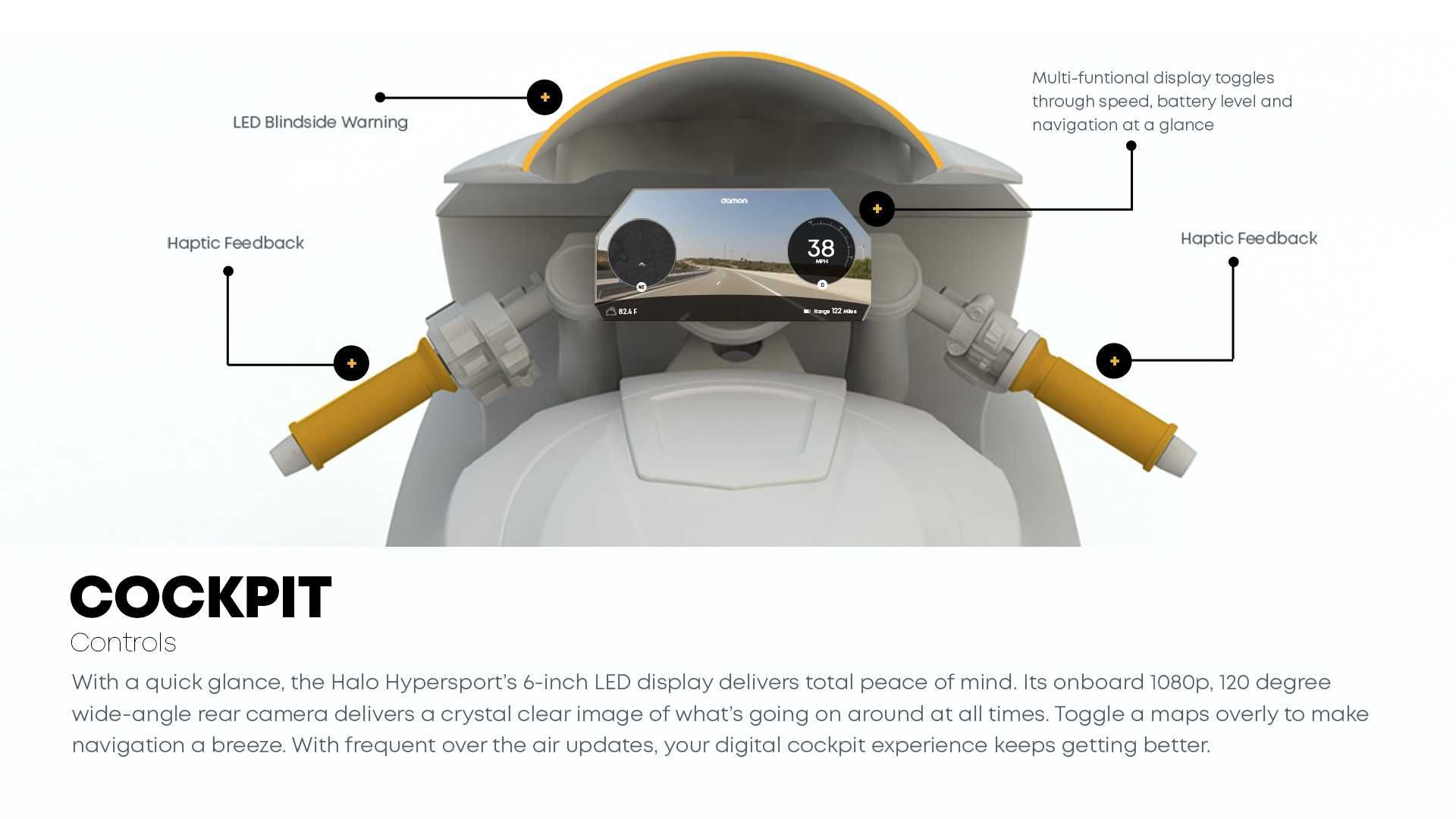With the dawn of electric supremacy into the motorcycling world, multiple possibilities have opened up for embedding technology and innovation to make riding safer than ever before. A lot of companies are pouring in cash like water into developing future automobile technologies to be able to minimize accidents and deaths on the road. Governments of countries are vying to call their roads the safest and are devising various strategies to do so.
Practically being one of the first to bring those innovations onto the roads is this Canadian tech startup - Damon Motorcycles. Unveiling their brand new product, the 200 hp Hypersport electric motorcycle, Damon unleashed the world’s safest, smartest, fully connected electric motorcycle employing sensor fusion, robotics, and AI. All of this while still carrying a powertrain with 200+ miles of range, Brembos’, Ohlins’, a carbon-fiber swingarm, and more.
After securing millions of dollars in funding, Damon geared up by teaming up with Blackberry on its CoPilot advanced warning system, which will be powered by Blackberry’s QNX technology. It is an intuitive system giving a 360-degree awareness around the motorcycle using cameras, radar, force sensors, and a telematics array.
The system is constantly tracking direction and velocity, scanning for threats, and anticipate where up to 64 objects are in real-time. If danger is imminent, the system will give haptic feedback through the handlebars, or visually on a digital dash and the windscreen to notify the rider, allowing safer and quicker adjustments to keep riding safely.
With Artificial intelligence and built-in 5G cloud connection embedded within the motorcycle, it learns and adapts on the go. Over time, the motorcycle will understand the rider’s techniques and patterns and provide the safest riding experience under every situation and conditions of the road, though, details on this aspect of the machine are again very vague.
The next bone of contention for the Hypersport is its ability to morph on the fly. With a push of a button, the riding geometry transforms between sports, sport-touring, and commuter mode via the 4-position electronic actuators that control the handlebar, footrest, saddle, and the windshield positions.
As impressive as these gimmicks sound, the sparse spec sheet too speaks of excitement about the Hypersport’s capabilities. The 21.5 kWh battery pack has enough juice to put the power figures at the 200 hp mark with a 147 ft/lbs of peak torque and a combined range of 200 miles. There’s a flexible curved OLED screen in the dash running Android OS, and the rider gets an always-on rear-view from the 120-degree 1080p rear-facing camera. Braking units see Brembo components, while Ohlins provide undulation supports.
At $24,995 for the Hypersport HS and $39,995 for the Hypersport Premier, it is a safe price to pay for a motorcycle with extrasensory perception & telepathy. It is also the recipient of a CES 2020 “Best in Innovation” award. Only 25 limited editions of the Hypersport will ever be made, and the deliveries will begin only in 2021. Damon motorcycles will ship directly to the consumer on a subscription plan to drive scale.
With Erik Buell currently sitting on the advisory board, and the co-founder of Alta Motors heading Demon’s technical aspects, the Canadian tech firm is touted to be a promising venue for the next big thing in motorcycling. We really hope Damon can live up to the hype it is so intent on creating.
Other players in the world of artificial intelligence, robotics, and big data include Honda with their ’Riding Assist-e’ concept. Suzuki’s ‘connected’ vehicles plan will have its future motorcycles to communicate with each other. Kawasaki had unveiled an electric Tron-ish concept bike - the Kawasaki J-Concept with a shape-shifting technology. BMW has developed an autonomous 1200 GS that does all the riding on its own. Harley-Davidson with its Autonomous Braking patents being seen online. Then there is Yamaha’s Motobot, an autonomous motorcycle-riding humanoid robot.
These are exciting times for the industry, but it is a big gamble taken up when it comes to judging what one perceives as ‘riding experience’. This could as well take away the concept of ‘self-learning’ to become an advanced and experienced rider. No doubt, it is going to save a lot of lives probably, but getting a bigger picture here is hazy — something like what the auto-shift did to driving cars.

